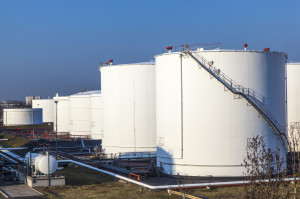 Natural gas prices were set for a sizable weekly gain, as traders price in an expected slight increase for US temps, which is set to spur more cooling demand. The US government posted official natgas storage levels yesterday, revealing another massive injection.
Natural gas prices were set for a sizable weekly gain, as traders price in an expected slight increase for US temps, which is set to spur more cooling demand. The US government posted official natgas storage levels yesterday, revealing another massive injection.
Natural gas futures for delivery in September traded at $3.897 per million British thermal units (mBtu) at 9:29 GMT on the NYMEX, up 0.54%. Prices ranged from $3.872 to $3.899 per mBtu. The contract was poised for a ~2% weekly increase, despite dropping 1.45% on Thursday.
The US Energy Information Administration (EIA) posted its weekly reading on US natgas storage levels yesterday. The report revealed a build of 82 billion cubic feet (Bcf), which was in line with expectations, and compares to a 49 Bcf average gain for the past five years.
“There will be abundant much colder than normal Canadian air lurking just across the border from August 15 through August 21,” analysts at NatGasWeather.com, who correctly projected this week’s gain, said in a note to clients. “Moderately bearish weather and EIA builds continue.”
Meanwhile, output from the Marcellus shale in the Northeast topped 15 bcf per day this month, with more capacity being added in August.
“Production in the Marcellus Region surpassed winter demand for natural gas in Pennsylvania and West Virginia several years ago and is now on track to be enough to equal the demand in those states plus New York, New Jersey, Delaware, Maryland, and Virginia combined,” the EIA said.
US weather outlook
NatGasWeather.com reported today that the northern and western US remain slightly cooler than usual with showers and comfortably low temperatures through the weekend, some localized drops to the 60s possible, followed by a several-degree rise for temps. The southern US will remain quite hot, with highs reaching triple digits. Overall cooling demand will be moderate, though dropping to low sometime next week.
In the 8-14 day outlook, the analysts say US weather will trend slightly cooler, as a Canadian system is due to head south into the US, bringing rains and clouds, and lowering temps back to comfortable for the Northeast and Midwest.
“We expect a nearly week long stretch of cooler than normal temperatures over numerous regions of the US, before the pattern finally takes a bit of a
breather around August 22,” analysts at NatGasWeather.com said in a note to clients. “It’s not impossible to think heating demand could be needed across the Great Lakes region if enough cold air is tapped.”
New York is set for a normal, rather boring day, according to AccuWeather.com. Temperatures will be seasonal, ranging 67-83 degrees Fahrenheit, with plenty of sun. The weekend is also projected to be as warm, with mostly pleasant and sunny weather, before a cooler start to next week. Chicago remains quite cooler than normal today and through the weekend, with temps no higher than 73-74 degrees, some 10 degrees below average. It will be mostly sunny, however, and temps will slightly and only briefly rise early next week.
Down South, Houston will see continuing warm weather today and through the weekend, with temps at 77-95, a few above average. There will be quite a few thunderstorms, however, before the skies clear for the start of next week. Readings will be largely the same early next week, though a slight warm up is possible. Over on the West Coast, Los Angeles weather will be normal and pleasant, with plenty of sun and seasonal temps at 65-82 through the weekend and into next week.
Technical support and resistance levels
According to Binary Tribune’s daily analysis, natgas September future’s central pivot point on the NYMEX stands at $3.905. In case the contract penetrates the first resistance level at $3.952 per million British thermal units, it will encounter next resistance at $4.028. If breached, upside movement will probably attempt to advance to $4.075 per mBtu.
If the energy source drops below its first resistance level at $3.829 per mBtu, it will see support at $3.782. If the second key support zone is breached, the power-station fuel’s downward movement may extend to $3.706 per mBtu.





